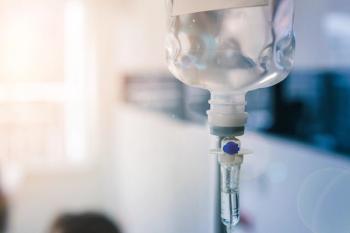
Multiple Factors Linked to Recurrence of Polyps After Endoscopic Sinus Surgery
Immunoglobulin G is among clinical features linked to recurrence of polyps following endoscopic sinus surgery for chronic rhinosinusitis.
Immunoglobulin G (IgG) is among multiple outcome measures and clinical features linked to recurrence of polyps following endoscopic sinus surgery (ESS) in patients with chronic rhinosinusitis with nasal polyps (CRSwNP), according to a study published in The Journal of Allergy and Clinical Immunology.
ESS is recommended for patients with CRSwNP who are unresponsive to standard of care intranasal and systemic corticosteroids. The procedure is associated with a significant improvement in symptom burden; however, polyp recurrence is typical after ESS, with between 60% and 70% of patients experiencing relapse after 18 months.
A recent study evaluating the risk of relapse in patients with CRSwNP who underwent ESS found that use of nonsteroidal anti-inflammatory drugs exacerbated respiratory disease, higher preoperative total score, and frontal sinus CT score as potential prognostic factors. However, these results were not confirmed by an additional multivariable analysis.
“Metrics are needed by which we can predict the outcomes of ESS for CRSwNP,” the authors of the study wrote. “Prior studies described elevated type 2 inflammation and clinical features in polyp recurrence, but the prognostic significance of these features has not been investigated.”
The investigators recruited 94 patients with CRSwNP in the 2 to 5 years following ESS who had biobanked polyp homogenates. Participants were evaluated through patient-reported outcome measures and endoscopic and radiographic scores pre- and post ESS, including the modified Lund-Mackay (MLM), modified Lund-Kennedy (MLK), and 22-item Sinonasal Outcomes Test (SNOT-22) scales.
“Pre-ESS biomarkers were assayed with ELISA and Luminex. Relaxed LASSO regression was applied to compare predictive biomarker-, clinical-, and combined models. Model performance was assessed using ROC and random forest (RF) analysis,” the study authors wrote.
Among patients in the study, polyp recurrence was reported in 39.4% of patients despite significant improvements in MLM radiographic scores (P < .0001) and SNOT-22 scores (P < .0001). Regarding risk factors, polyp recurrence was associated with worse post-ESS MLM (P < .0001), modified Lund-Kennedy (P < .0001), and SNOT-22 (P < .01) scores. Further, relaxed LASSO identified 3 biomarkers (area under the curve [AUC] = 0.78) and 2 clinical predictors (AUC = 0.79) of polyp recurrence.
The combined model improved polyp recurrence predictive accuracy to an AUC of 0.89, and it incorporated 5 predictors: eosinophil cationic protein, anti–double-stranded DNA (anti-dsDNA) IgG, interleukin (IL)-5, pre-ESS MLM, and asthma.
Additional RF analysis quantified the prognostic value of each variable and identified the 5 variables as the strongest predictors of polyp recurrence.
“Polyp recurrence was a representative indicator for CRSwNP with strong associations with PROM, endoscopic, and radiographic severity,” the study authors wrote. “The combined model comprised of ECP, IL-5, anti-dsDNA IgG, preoperative MLM, and asthma could accurately predict polyp recurrence.”
Reference
Bai J, Huang J, Price C, et al. Prognostic factors for polyp recurrence in chronic rhinosinusitis with nasal polyps. J Allergy Clin Immunol. Published online February 1, 2022. doi:10.1016/j.jaci.2021.12.485
Newsletter
Stay informed on drug updates, treatment guidelines, and pharmacy practice trends—subscribe to Pharmacy Times for weekly clinical insights.


















































































































































































































